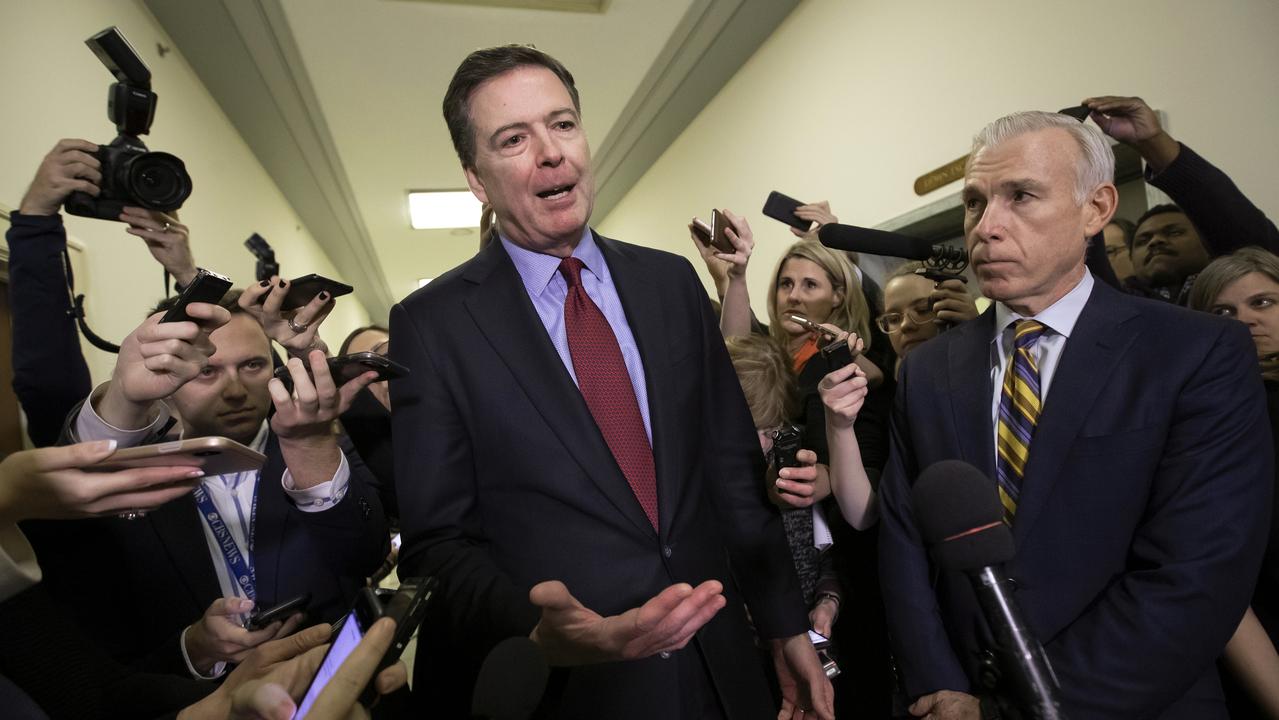Keynes was half right: now drudgery’s gone, the challenge is meaningful work
A BIG shift in employment has left governments powerless and struggling.

DOROTHY Stevenson, a nurse in 1920s Victoria, worked 72 hours a week. Her roster, on top of domestic duties bereft of electronic devices, was onerous but not unusual. “In 1900 most Australians worked more than 48 hours a week, and a big number 60 or 70,” writes historian Geoffrey Blainey.
Dorothy’s occasional dream of a world without work is becoming a nightmare reality for modern politicians. For all the talk of working longer and harder, the story of the 20th century was one of working less and easier.
It was a triumph for the ordinary worker but, as the century drew on, work became increasingly scarce in rich countries.
Unemployment is a luxury of a rich society. In 18th-century colonial NSW, effective unemployment was near zero — the sick, the old, the weak could not be sustained — as it was in primitive societies. Fast-forward to June last year, when 38 per cent of Australians aged 16 and older were not working, even if the official unemployment rate was 5.5 per cent.
Is John Maynard Keynes’s famous prediction of mass affluence alongside mass unemployment slowly unfolding? In 1930, he wrote that rich, advanced countries would ultimately struggle to find jobs for most of their workers.
“Discovery of means of economising the use of labour (will outrun) the pace at which we can find new uses for labour,” he said.
In the midst of the Depression, he said “the increase of technical efficiency has been taking place faster than we can deal with the problem of labour absorption”.
Bob Gregory, emeritus professor of economics at the Australian National University, says Keynes is only half right.
“Men now work 10 years less than in 1970: some of the reduction is more years in school rather than work, some is early retirement and some is just higher levels of unemployment and disability,” he says.
While 715,000 Australians are counted as officially unemployed, a further 850,000 receive the disability support pension, which may be considered a de facto unemployment payment.
“Women, on the other hand, now work about eight years more in the labour market, after adjusting for part-time work,” Gregory says.
Australia’s unemployment rate has hovered far above the remarkable 1.9 per cent it averaged in the halcyon decades after World War II, but it paints too rosy a picture. Anyone who has worked for more than one hour a week is considered employed. Part-time work as a share of the total has doubled since 1978, while the underemployment rate — those in jobs who want to work more — has risen steadily, tripling to 7.5 per cent across the same period.
The sorts of low-pay, low-skill manufacturing and construction jobs that used to keep swaths of (mainly men) in long-term work are disappearing, replaced by higher-turnover service jobs that favour women and the young.
At the same time, the share of workers dependent directly or indirectly on government is growing rapidly. For every one of the extra 169,000 mining workers since the resource boom got under way in 2004, the healthcare and social-assistance sector added three. With 1.45 million workers, it overtook retail as Australia’s biggest employer in 2009.
As more businesses depend on government contracts (or regulations) in the health, education and disability sectors, it is increasingly difficult to draw a line between what is and is not government.
Almost 45 per cent of new jobs in the next five years will come from the health, education and public administration sectors, according to Australian Jobs 2014, a government report released last week.
Mining, manufacturing and farming are expected to shed about 55,000 jobs in that period.
The growing share of Australians working in the health, social care and education sectors — relatively low-productivity, highly unionised, often government — will make it much harder to boost productivity into the future. Indeed, in the late 19th century, Australia lost its mantle as world’s richest nation per head to the US in part because the shares of its workforce shifted from globally competitive farming and mining to protected and relatively inefficient manufacturing.
Complicating the story, as full-time private work shrinks, is the increasing prevalence of what London School of Economics professor David Graeber has termed “bullshit jobs” — those that contribute little or nothing to prosperity beyond enriching the individuals concerned.
Characterised by high pay and little tangible output, they flourish in government and near the top of large public companies where money is easily wasted — in roles such as corporate lawyers and “strategists’’, academic and health administrators, remuneration consultants, political staff and ‘‘commissioners’’, for example.
“Huge swaths of people in the Western world spend their entire working lives performing tasks they secretly believe do not really need to be performed,” Graeber mused last year.
Not only may jobs become scarcer, they may not pay so well. Economics Nobel prize winner James Mirrlees, speaking in Sydney on Thursday night, said Australians should expect higher unemployment unless their average wages fell to levels in developing countries.
“Wages at all skill levels will ultimately be equalised as investors shift their capital to developing countries to take advantage of cheaper labour and higher returns,” he said.
Indeed, real wages have been stagnant or falling in the US and Europe for years now. Across the year to March, Australians’ wages grew by 2.6 per cent, more slowly than inflation.
It is a matter of logic that Australia’s high minimum wages — more than $16 an hour, the highest in the world — and byzantine conditions retard job growth. If the cost of a worker is not less than their contribution to the bottom line, they are less likely to be hired.
Europe has long had much higher unemployment than comparable rich countries because of the mandated difficulty of firing workers. Youth unemployment in Spain, Greece and Italy is more than 40 per cent.
But if all these impediments were removed, would unemployment in rich countries substantially disappear? Even in the US, with a negligible minimum wage, jobs growth is sluggish.
More than four years on from the global financial crisis, Federal Reserve officials are puzzled that unemployment, more than a third of which is long term, is stubbornly perched at about 6.5 per cent.
Gregory is sceptical about whether the Abbott government’s withdrawal of unemployment benefits from young people after six months will have much effect on unemployment.
“Most welfare use comes from lack of jobs but, when thinking about the large changes over half a century, it is very difficult to know exactly what has been causing the large increases in welfare numbers,” he says. “Most people’s judgments depend to a large extent on their political views.”
Adjunct scholar at the American Enterprise Institute in Washington, DC, Richard Vedder says: “Government involvement in the jobs market is counterproductive.” He points to a tripling, to nine million, of the number of US disability benefit claimants since 1990.
Spending more on education and training is routinely proffered in rich countries as a solution to entrenched unemployment.
Marco Annunziata, chief economist at GE, one of the world’s biggest companies, is optimistic but says the mix of skills in the workforce is inhibiting people from finding jobs.
“There needs to be greater emphasis on science, maths and technology” he says, acknowledging that median household wages had stagnated in the US. “But I expect advances in technology in coming years will make blue and white-collar workers more productive and boost their incomes.
“It’s important to remember that the counterpoint to stagnation of incomes in rich countries is the improvement in incomes in poorer countries.”
Vedder is sceptical, however, saying boosting spending on education will do little to help the problem and universities in rich countries are churning out far more graduates than jobs that require tertiary education.
“We have 115,000 janitors in the United States with bachelors degrees — about 8000 with a masters degree,” he says, arguing that about half of the US’s 1.8 million new graduates end up in low-skilled jobs.
Employment rates of graduates in Australia have fallen from 79 per cent in 2009 to 71 per cent last year, with almost as large a fall for masters students.
Vedder, who has written a book about US unemployment in the 20th century, will tell the US Senate next week that it has overinvested in higher education at the expense of basic literacy and numeracy.
“Sure, there is a wider benefit to an educated society, but let’s be frank — a lot of this money is a subsidy to getting drunk and partying for students who shouldn’t really be there in the first place.
“We’re seeing rampant credential inflation and some employers are now insisting on a degree where patently one is not remotely necessary.”
Keynes’s 1930 prediction was meant to be reassuring; he made the typical economist’s assumption that people do not want to work, foreshadowing a nirvana of leisure. Sociology and anthropology suggest otherwise.
Indeed, politicians in rich countries are under intense pressure to create jobs, however powerless they are in reality in the face of global economic forces. If the timeless human challenge of alleviating the drudgery of work is being solved, then the challenge of creating meaningful work is just beginning.



